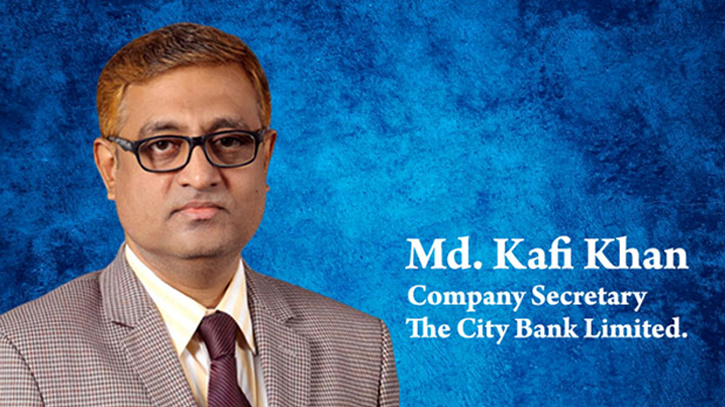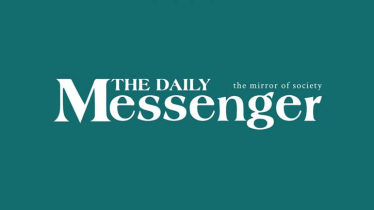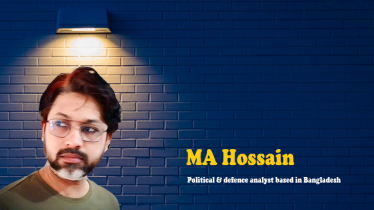
Photo: Messenger
In the ensuing paradigm, the banking sector irrespective of public or private sector and foreign or domestic banks’, their increased reliance on non-fund-based business activities would become inevitable. Persistent endeavours in scouting for new technology, new products/services/ new avenues have become necessary for the growth and sustainability of the banking system. In this context, perhaps bancassurance could be an appropriate choice for banks to increase their stable source of income with relatively few investments in the form of new infrastructure.
The success of bancassurance greatly hinges on banks ensuring excellent customer relationships; therefore, banks need to strive towards that direction. The changing mindset is cascading through the banking sector in Bangladesh, and this would be the right time for banks to resort to bankassurance, especially in the context of the branch-oriented, proactive policy environment of regulatory authorities and the government. The fact that the banking operations in Bangladesh, unlike in other developed countries, are still branch-oriented and manually operated vis-à-vis highly mechanised and automated banking channels, viz., internet banking, ATMs, etc are all the more conducive for the flourishing of bancassurance. Regulators could explore the possibility of allowing banks having tie-up arrangements with more than one insurance company, giving wider choice for the customers. In addition to acting as distributors, banks have recognised the potential of bancassurance in Bangladesh and will take equity stakes in insurance companies in the long run. This is somewhat similar to a trend observed in the United Kingdom and elsewhere, where banks started off as distributors of insurance but then moved on to fully owned insurance subsidiaries.
Going by the present pace, bancassurance would turn out to be a norm rather than an exception in the future in Bangladesh like India. Supervisory concerns, as pointed out earlier, could best be tackled by way of closer and systematised coordination between the respective supervisory authorities. There needs to be a clear-cut identification of activities between banking and insurance at the institution’s level as well as at the level of regulators. Adequate training coupled with a sufficient incentive system could avert the banks’ staff resistance, if any. In sum, the bancassurance strategy would be a ‘win-win situation for all the parties involved: the customer, the insurance companies and the banks. The most immediate advantage for customers is that in the insurance business the question of trust plays a greater role, especially due to the built requirement of a long-term relationship between the insurer and the insured. Over the period, customers have to be used to the monopolistic attitude of public-sector insurance companies. Despite there are many drawbacks in their dealings, they enjoyed customer confidence. This trend continues even now, mainly due to their government ownership. For the customers to move over to private insurance companies that are collaborated with foreign companies which are less known to the Bangladeshi public, it would take a little more time.
The banks could comfortably fill the void between the less-known newer private insurance companies and the prospective insured because of their well-established and long-cherished relationship. Under these circumstances, any new insurance products routed through the bancassurance channel would be well received by the customers. Above all, in the emerging scenario, customers prefer to have a consolidation and delivery of all financial services at a single window in the form of a ‘financial supermarket’, irrespective of whether financial or banking transactions, because such availability of a wide range of financial/ banking services and products relieves the customers from the painstaking efforts of scouting for a separate dealer for each service/ product. Even internationally, the trend is towards the ‘one-stop-shop’. Customers could also get a share in the cost savings in the form of reduced premium rates because of economies of scope, besides getting better financial counseling at single point. Even in the case of developed countries, financial literacy and financial counselling has been increasingly stressed in recent years. These become essential especially when a long-term decision involves long term investments. It should emphasize the importance and necessity for financial counselling and financial literature. In that context to the bankers are better placed to extend such counseling or financial advices to the customer because of their well-established, long cherished relationship. The relationship between insurer and insured and bank and its client are different; the former involves taking decisions for long-term parting of money, in such cases counseling is necessary, here too the bancassurance can be of reassuring for the customer.
Bancassurance will turn nightmare as bankers will face pressure to sell insurance products. Senior-level executives will be getting handsome perks such as holidays for meeting targets on the sale of third-party products. Those who fail are often threatened with penal measures. Bank executives, especially from public sector banks (PSBs), will face immense pressure from top management to sell third-party products like insurance. Failure to meet targets invites informal penal actions while meeting targets brings perks such as parties at five-star resorts, several condition of anonymity. Banks typically cross-sell insurance products of their subsidiaries, and sometimes of other companies, along with loan products. Many times banks insist purchase of policies along with loan products.
While this has been the case for a long time, of late the pressure will grow manifold on mid-level bank executives who typically do not speak in the open fearing the wrath of senior colleagues. Executives across banks. Will want to be identified, citing the sensitivity of the matter. Forcefully imposed to sell insurance products, even though bankers will become agents of insurance companies, Over the period core banking work may be disturbed badly as the workforce involving more in selling insurance products. Insurance company distribution channels are mainly of four types: direct selling, selling through insurance agents/ wealth managers, selling through brokers and bancassurance. Usually, the primary distribution of insurance is through the agency channel). Bancassurance is a more effective distribution channel than the agents, due to the high commission rates involved in the agency distribution channel. However, insurance companies with high-performing agency channels do not always perform highly in bancassurance.
Yet, bancassurance is both an opportunity and a challenge. The barriers holding back bancassurance in developing countries which includes policy issues in the scopes of human resource training, disclosure, product bundling, considerations in information protection and licencing. Bancassurance can cause image risks, requires well-trained staff and a healthy workplace culture. Furthermore, there could be distribution disadvantages, coupled with regulatory, legal and taxation barriers for both banks and insurance companies in initiating bancassurance. It is evident that the impact from an employee viewpoint, particularly in relation to bancassurance managers, is understudied.
Bancassurance is very popular worldwide because it is beneficial to banks, insurance companies, and customers. But certain risks, such as strict rules and regulations for banks/insurance companies, have made it less popular in some regions. Indeed, many countries have banned such an agreement. However, as globalization and the relaxation of banking rules has progressed, more and more countries are adopting this type of coordination between banks and insurance companies for the mutual benefit of all parties. Bangladesh is not exception too.
From the outside, bancassurance may seem attractive and easy to implement, but both banks and insurance companies face several challenges in implementing it. These include: Banks and insurance companies must work together to make such an agreement a success. In reality, it isn’t easy to bring two different companies together. Insurance companies have no direct control over the sale of their product. This may make it more difficult to manage marketing strategies. It increases the workload for banks, as their employees need to fully understand insurance products. If a bank has more than one such arrangement, it will sell the products that give it more income. Furthermore, these arrangements make it difficult to determine legal liability if a customer registers any disputes. The growing trend towards internet banking and mobile banking threatens the existence of bancassurance. Likewise, the development of new distribution channels could make it more difficult for banks to sell insurance products.
Should consider the critical success factors as with any successful arrangement, the success of bancassurance depends on the following decisive factors: The top management of the banks must show commitment and make insurance sales part of the core strategies of the banks, Banks must see insurance not just as an additional product but as a vital part of their business, Efforts should be made to change a bank’s culture to be more insurance-friendly. Customers should be given all the information they need when buying an insurance product.
The writer is the Company Secretary, The City Bank PLC.
Messenger/Sun Yath








